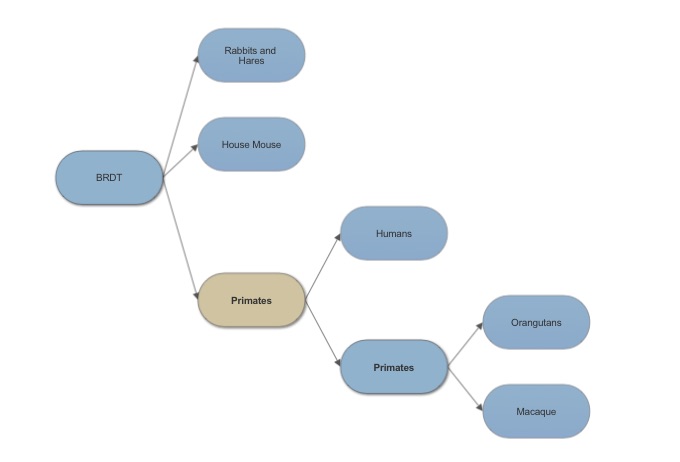User:Elisha Lacey/Sandbox 1
From Proteopedia
(Difference between revisions)
| Line 1: | Line 1: | ||
==Bromodomain testis specific== | ==Bromodomain testis specific== | ||
| - | <StructureSection load=' | + | <StructureSection load='1stp' size='340' side='right' caption='Bromodomain testis specific as functional dimer=''> |
The human genome has 56 bromodomains across 42 proteins. Bromodomains are found in mammals. Bromodomain testis specific(BRDT) and expressed in testis, spermatocytes, spermatids, and spermatozoa. BRDT is also known as known as CT9 and RING3-like protein and belongs to the bromodomain extra terminal (BET) family. BRDT is expressed in pachytene and diplotene spermatocytes and round spermatids. BRDTis not in testis subjects with sertoli cell only syndrome. | The human genome has 56 bromodomains across 42 proteins. Bromodomains are found in mammals. Bromodomain testis specific(BRDT) and expressed in testis, spermatocytes, spermatids, and spermatozoa. BRDT is also known as known as CT9 and RING3-like protein and belongs to the bromodomain extra terminal (BET) family. BRDT is expressed in pachytene and diplotene spermatocytes and round spermatids. BRDTis not in testis subjects with sertoli cell only syndrome. | ||
| - | + | ||
== Function == | == Function == | ||
Bromodomain testis specific is a monomer that is only fully functional as a dimer. BRDT is a transcriptional regulator for gene expression during spermatogenesis. | Bromodomain testis specific is a monomer that is only fully functional as a dimer. BRDT is a transcriptional regulator for gene expression during spermatogenesis. | ||
| Line 12: | Line 12: | ||
==Analysis of Structure == | ==Analysis of Structure == | ||
The functional unit for BRDT is two bromodomain motifs, each monomer is composed of 4 anti-parallel alpha helixes. At the end of the helix bundles is the acetylated-lysine binding site binding site. BRDT belongs to the histone acetyltransferase superfamily. BRDT is tissue restricted to the testis. BRDT activates the histones by hyper acetylation at the promoter of genes leading to condensed acetylated chromatin of a haploid spermatid. | The functional unit for BRDT is two bromodomain motifs, each monomer is composed of 4 anti-parallel alpha helixes. At the end of the helix bundles is the acetylated-lysine binding site binding site. BRDT belongs to the histone acetyltransferase superfamily. BRDT is tissue restricted to the testis. BRDT activates the histones by hyper acetylation at the promoter of genes leading to condensed acetylated chromatin of a haploid spermatid. | ||
| + | [[Image:topology.jpg]] | ||
==Analysis of related Sequences== | ==Analysis of related Sequences== | ||
Bromodomain testis specific shares 84% sequence similarity to that of bromodomain containing protein for that of zebrafish. | Bromodomain testis specific shares 84% sequence similarity to that of bromodomain containing protein for that of zebrafish. | ||
Revision as of 05:02, 10 December 2015
Bromodomain testis specific
| |||||||||||
References
Berkovits B, Wolgemuth D. The first bromodomain of the testis-specific double bromodomain protein Brdt is required for chromocenter organization that is modulated by genetic background. PMC. 2011 Dec 15: 360 (2):358-368.
Barda S, Yogev L, Paz G, et al. BRDT gene sequence in human testicular pathologies and the implication of its single nucleotide polymorphism (rs3088232) on fertility. Andrology. 2014 May 28; 2(4): 641-647.
Zdrojewicz Z, Konieczyn R, Papier P, Szten F.Brdt Bromodomains Inhibitors and Other Modern Means of Male Contraception. ACEM. 2015 Feb 23; 24(4):705-714.


